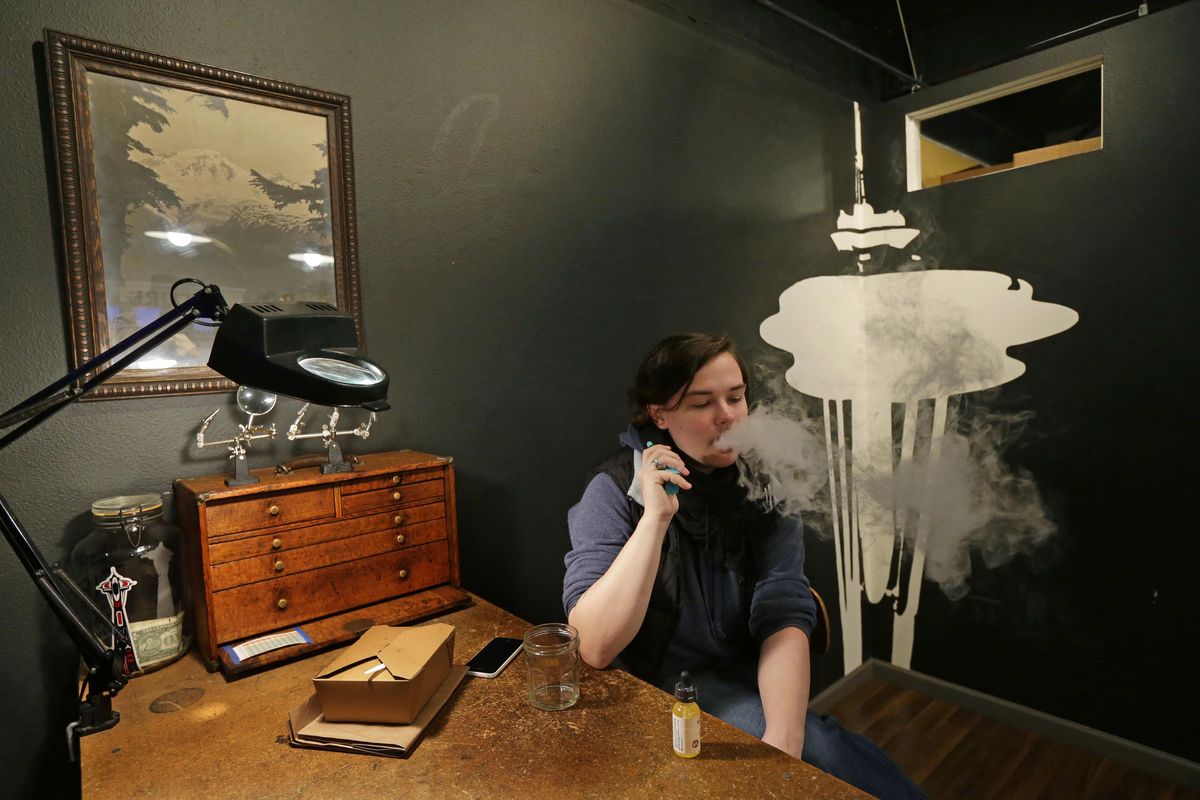Poison Control Center official warns of dangers of e-cigarettes, vaping

A representative of the Poison Control Center spoke about the dangers of e-cigarettes and vaping to a sparse but attentive group of parents Monday at Mt. Spokane High School.
E-cigarettes range from disposable devices that look like cigarettes and cost only about $10 to refillable and rechargeable devices that can cost hundreds of dollars, said Jaren O’Conner. The vape mods are the ones that create huge clouds of vapor.
“Those are more hip, they’re more in and they’re more popular,” O’Conner said.
Vaping has been hugely popular among teens, O’Connor said. There are even Vape Cons, where teens and young adults gather for competitions and can get sponsors, he said. “It’s not just a nicotine delivery system, it’s a clique,” he said.
In 2016, 11 percent of teens surveyed across the country reported using a vaping device in the previous 30 days. That number was 20 percent in Washington state and 27 percent in Spokane, O’Conner said.
A new device from Juul that uses a salt-based liquid and contains more concentrated nicotine has been taking over the market recently, O’Conner said. Many parents don’t recognize the device for what it is, he said.
“It’s very discreet,” he said. “It looks like a little USB charging device. This is the most popular device in high schools right now.”
A lot of e-liquid is fruit flavored, so the strong smell of fruit can be a giveaway, O’Conner said.
The concern is the amount of nicotine contained in the e-liquid in the devices. Some can contain the same amount of nicotine as found in 1,000 or more cigarettes. In small doses nicotine is a stimulant, but in large doses it depresses the nervous system.
“You can get lethargic,” he said. “Eventually if you get enough of it you can actually stop breathing.”
A lot of e-liquid is fruit flavored and is packaged with labels with candy on it, though the FDA is cracking down on that, O’Conner said.
“They look like candy, they smell like candy,” he said. “Imagine the potential for overdose in small children. One milliliter could be a fatal dose in a small child.”
There have been multiple hospitalizations in Washington due to children ingesting e-liquid, he said.
At first, companies were using marketing that appealed to teens. “They tried to target young females a lot,” he said.
In the past two years the FDA has been working with manufacturers to eliminate advertising and packaging directed toward children and teens. Last week they raided Juul headquarters to see if there was evidence that the company has been targeting teens because the company was not cooperating voluntarily, O’Conner said.
But small manufacturers that don’t transport their product across state lines have largely been left alone, O’Conner said, and they still use candy labels.
“We have a lot of small manufacturers in Spokane who are still putting stuff out,” he said.
O’Connor said claims that smoking e-cigarettes are safer than real cigarettes may technically be true, but safer does not mean safe, he said. The vapor generated by vaping devices contains formaldehyde and other cancer-causing chemicals. A lot of the e-liquid chemicals come from China, and there is no quality control, he said.
“Who knows exactly what’s in them?” he said.
In fact, testing has shown that e-liquid marketed as nicotine free can have high amounts of nicotine in it, and most users don’t know that, O’Conner said.
“They think they’re just using candy-flavored vapor,” he said.
A recent research study examined two groups of 10th-graders in separate states. Those who smoked e-cigarettes were between three and eight times more likely to smoke tobacco cigarettes within two years, O’Conner said.
“This looks like it’s a gateway device to actually using cigarettes,” he said.
The exact dangers posed by vaping are yet to be determined, he said. “Unfortunately, we don’t really have long-term studies,” he said. “The jury’s out on how harmful this will be.”